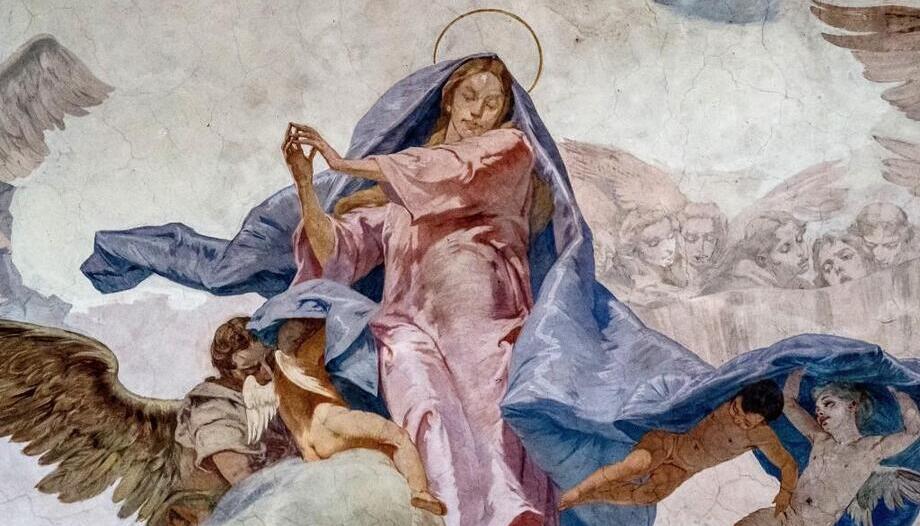– Supernatural veneration of the Virgin Mary has existed since the earliest times of Christianity. Already in the Gospels, the figure of Mary, although treated with sobriety, has a great importance. In the second century, Fathers of the ChurchThe apocryphal writings of that time extol her virginal purity and present her with an almost angelic dignity.
The first Marian celebrations
In the 3rd century, the prayer "Sub tuum praesidium" speaks of the power of intercession that Christians attributed to the Virgin. We also know of a series of Marian hymns that were sung towards the end of the 4th century, even before the Council of Ephesus solemnly proclaimed in 431 that Mary is the Mother of God ("Theotókos").
Jerusalem in the mid-fifth century knew of only one liturgical commemoration of Mary. This commemoration took place in a church located halfway between Jerusalem and Bethlehem. We know this because the liturgical calendar with the feasts and commemorations celebrated in the Holy City at that time has been preserved in the Armenian language. This calendar also includes the readings for each celebration. One of its entries stated the following: "August 15: Mary Theotokos: on the second mile from Bethlehem". This was not the feast of the Assumption that we celebrate today, nor the feast of the Dormition of Mary, which preceded the Assumption from the 6th century onwards. That day commemorated the repose of the Mother of God ("Theotókos").
Sleep
What kind of rest was it? At that time, there was a legend that Mary, already pregnant, stopped to rest during the journey to Bethlehem. A very ancient apocryphal writing, the "Protoevangelium of James", tells that, halfway between Jerusalem and Bethlehem, Mary, already close to giving birth, felt tired and got off the donkey to rest for a while: the moment of the virgin birth was approaching. In memory of this legendary episode, a pious Christian woman, Hikelia, built a church in that place around the middle of the 5th century, which was naturally called the Church of Rest or "Kathisma" ("seat" or "seat" in ancient Greek). This church, the plan of which is still preserved, has as its center the rock on which Mary is said to have sat down to rest. The Armenian calendar referred to it.
This calendar tells us, therefore, that in the church of the "Kathisma" there was a Marian memorial of Mary Mother of God. The readings of that day contained the well-known prophecy of Isaiah about the Virgin conceiving and giving birth to Emmanuel ("God with us") and the text in which St. Paul tells the Galatians that "when the fullness of time had come, God sent his Son, born of woman". It was, therefore, a remembrance in which everything was linked to the birth of Jesus and the virgin birth of Mary.
The Feast of the Assumption of the Virgin
But then, how did we come to celebrate on August 15 a feast that does not commemorate the birth of Jesus from a virgin mother, but his Assumption into heaven? A later calendar (probably from the late 5th or 6th century), similar to the Armenian one but preserved in the Georgian language, reports a different practice. In it, the Marian commemoration celebrated in the Church of Repose is still present, but it is no longer on August 15: it has been brought forward to the 13th of the same month. On August 15, instead, this calendar indicates a new Marian commemoration, which this time is celebrated in the church of Gethsemane, near the garden where Jesus had prayed before his passion.
Some apocrypha located there the place where the body of Mary had been deposited after her death, before the Lord transferred it to heaven. According to these writings, this church contained, empty, the tomb of Mary. The readings and hymns of this Georgian calendar show that it is already a commemoration of the Dormition and the transfer of the Virgin to heaven.
A universal celebration
God had not allowed his Mother's body to remain in the tomb. In the church of Gethsemane, at the end of the 5th century, Christians celebrated this beautiful grace. In the following century, the wide diffusion of these apocryphal writings on the Dormition and Glorification of Mary favored the spread of this Marian commemoration of Gethsemane. Thus it began to be celebrated in other places as well, to the point that, at the end of the 6th century, the emperor Maurice decreed that it be celebrated as a feast throughout the empire.
Rome established it half a century later (7th century), calling it the Feast of the Assumption of Mary into Heaven. The Marian feast of August 15 was soon to become the most solemn and popular of Rome's Marian feasts.








